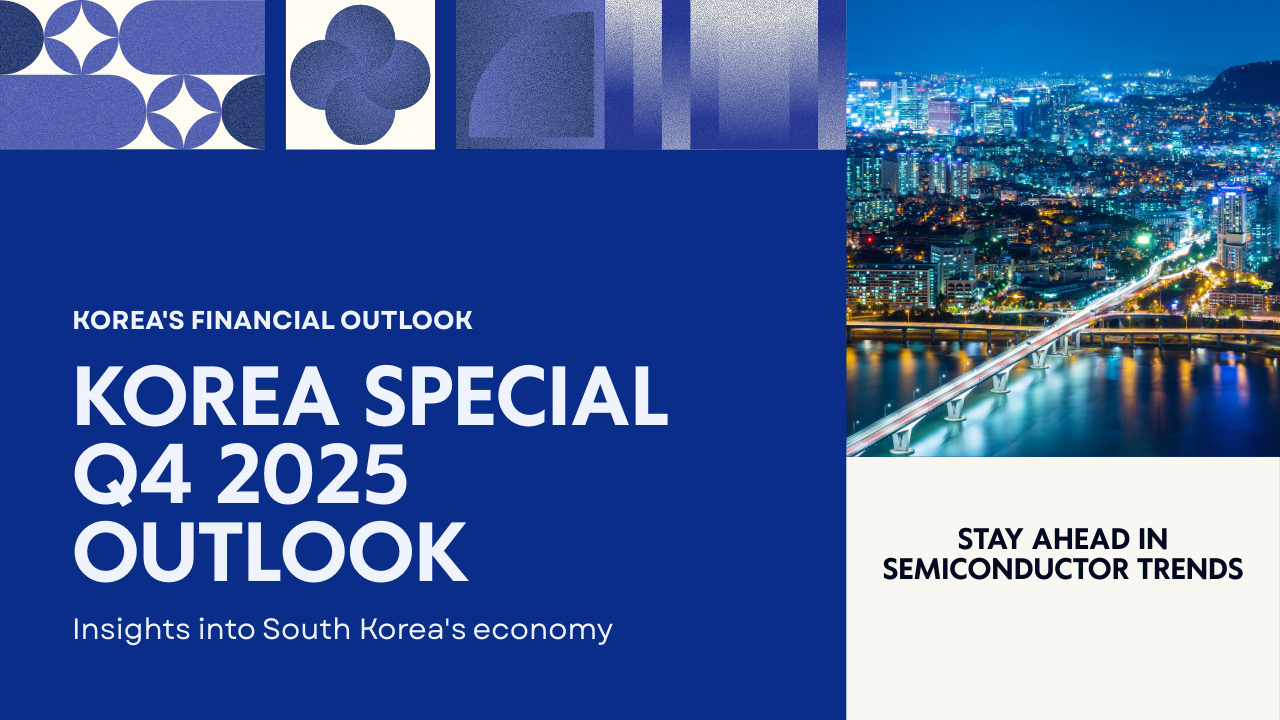Introduction: Why Korea Deserves a Special Focus
South Korea stands at the intersection of developed and emerging markets. It is a member of the OECD and G20, with advanced industries and global capital markets. Yet, like many EM economies, Korea’s markets remain sensitive to global risk sentiment, U.S. monetary policy, and regional geopolitical dynamics.
By Q4 2025, Korea faces both structural tailwinds — such as its dominance in semiconductors and battery technology — and cyclical challenges, including slowing exports to China and external vulnerability to global interest rate cycles.
Macro Environment: Korea in Q4 2025
Growth Outlook
- GDP expected at ~2.3% for 2025, modest compared to India or Vietnam but stable.
- Domestic consumption recovering after years of high household debt pressure.
- Government focusing on digital transformation and green investments.
Inflation & Monetary Policy
- Inflation moderated to ~2.5%, close to BOK target.
- Bank of Korea paused rate hikes, maintaining policy rate around 3.25%.
- Market expects potential easing in 2026, depending on Fed trajectory.
External Balance
- Current account surplus narrowing due to weaker exports to China.
- Resilient services sector (K-content, tourism) supports balance of payments.
Korean Won (KRW): FX Dynamics
- 2024–2025 Recap: KRW weakened significantly in 2024 due to strong USD and global uncertainty, but stabilized in mid-2025.
- Drivers in Q4 2025:
- Fed pause supports KRW stabilization.
- Export recovery limited, but foreign portfolio inflows help.
- Investor Implication: KRW offers relative stability, but remains sensitive to Fed policy and China trade flows.
Korean Equities: Sector-by-Sector Breakdown
Semiconductors
- Korea remains a global leader (Samsung, SK Hynix).
- AI boom drives memory demand; pricing stabilizing.
- Valuations attractive compared to U.S. peers.
Secondary Batteries (EV Supply Chain)
- Korea’s battery makers (LG Energy Solution, Samsung SDI) at the core of global EV transition.
- Facing rising competition from China, but strong presence in U.S./Europe markets.
Internet & Platforms
- Naver, Kakao adapting to AI integration.
- Regulatory scrutiny moderating compared to 2020–2022 peak.
Biotech & Healthcare
- K-biotech continues to expand in global clinical trials.
- Valuations remain volatile; selective opportunities.
Foreign Investor Sentiment
- Korea included in major EM benchmarks (MSCI EM), but lobbying continues for MSCI DM upgrade.
- Q4 2025 flows into KOSPI supported by demand for semiconductors and batteries.
- Retail investors (“K-stock army”) remain active but less dominant than in 2021.
Key Takeaways (Mid-Quarter Insights)
- Korea balances advanced industry strengths with EM-style vulnerabilities.
- KRW stabilizes but hinges on Fed and China dynamics.
- Equities driven by semiconductors and EV supply chains; selective plays in internet and biotech.
- Korea remains a strategic EM-DM hybrid allocation for global portfolios.
Korean Bonds & Interest Rates
Government Bonds
- Yields stable at ~3.3–3.5% in Q4 2025.
- Attractive vs U.S. Treasuries for Asian investors seeking diversification.
- Domestic pension funds remain major buyers.
Corporate Bonds
- Korean conglomerates (chaebols) issue steady supply.
- Credit spreads narrowed in Q4, reflecting stable fundamentals.
- ESG-linked corporate bonds gaining traction.
Investor Implication
- Korean bonds provide defensive allocation with modest yields.
- Favorable for regional fixed-income portfolios balancing higher-beta EM exposure.
Alternative Investments
Real Estate & Infrastructure
- Domestic real estate cooled after 2020–2023 surge.
- Institutional flows shifting to logistics centers, data centers, renewable energy infrastructure.
ESG Investments
- Korea advancing carbon neutrality agenda.
- Green bonds issued by corporates (Samsung, Hyundai) attract global ESG funds.
Foreign Investor Dynamics
- Equity Flows: Foreign funds net buyers of semiconductors and EV-related stocks.
- Bond Flows: Regional investors (Japan, Singapore) increase KRW-denominated bond holdings.
- MSCI Upgrade Debate: Korea still classified as EM, but upgrade to DM remains a long-term catalyst.
Outlook Beyond Q4 2025
- 2026 Prospects:
- Potential BOK rate cuts if global easing begins.
- Semiconductor cycle recovery to boost exports.
- EV battery sector expands global partnerships.
- Risks:
- China slowdown could hurt trade.
- Geopolitical risks with North Korea remain ever-present.
👉 For a forward-looking perspective, see our Korea Special 2026 Outlook.

Leave a Reply